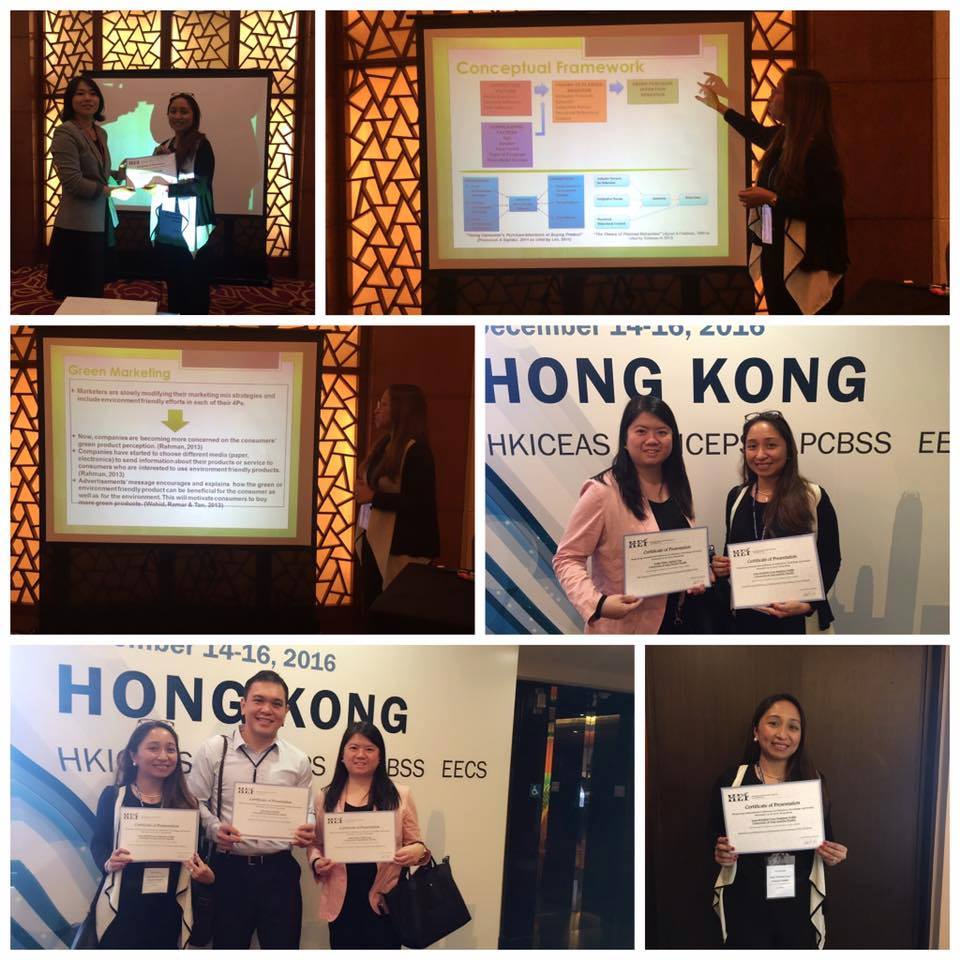Last December 2016, a group of faculty members from the School of Management (SMN) bagged top honors from the 5th Hong Kong International Conference on Education, Psychology and Society (5th HKICEPS). One of them is Mrs. Lota Kristine San Juan-Nable, who won the “Best Paper Award” for her research on “Intentions and Behaviors of Adolescents in Purchasing Green Products*.” On the basis of her research, Mrs. Nable gave a few tips on how to urge teens and adolescents to buy green products.

1. Educate in school.
According to Mrs. Nable, the biggest influencer is still the school. “Teaching the positive effects of green products on the environment is highly effective since adolescents aged 15-24 are usually open to new and innovative ideas, and are perceptive of new things as long as they are educated about them.”
She also stressed that peers play an important role in educating the youth, since they talk about it, especially if some already talk about it with their parents, which leads us to the second part.
2. Urge parents to be great influencers.
Education is not just limited to the school and peers; parents have a vital role in educating their children as well. Parents have been highlighted as influencers because 100 to 150 respondents in the study expressed that parents play a big influence on how the youth perceive green products.
“If we use the example model, when the parents use green products, the youth then use it. Adolescents realize, ‘I now have knowledge of it, I am aware of it, I now know the benefits,’ and so it will seep into their system.”
In a similar study on which the questionnaire used was based, primarily studies done in Hong Kong and Singapore, the parents were not considered an important factor in the use of green products.
“It is only in the Philippines where the ranking of parents is high, a matter that can be attributed to the culture.”
3. Use media.
The use of media as a tool is also important since majority of adolescents, if not all, make use of social media on a daily basis. The use of media such as TV, radio, and social media will be quite beneficial to green marketers, since those aged 15-24 are mostly millennials.
“The target demographic is basically millennials, so it is understandable that social media play a very important role.”

Overall, Mrs. Nable’s study saw that adolescents are greatly open to the use of green products, and in fact, it is a palpable market that is yet to be explored fully. However, marketers will need to work double time to educate not just the adolescents but also the parents on how green products can be beneficial in the long term.
*Green products are energy-efficient, durable, and often have low maintenance requirements. They are free of ozone-depleting chemicals and toxic compounds, and do not produce toxic by-products. They are often made of recycled materials or content, or from renewable and sustainable sources.
Leave a Reply